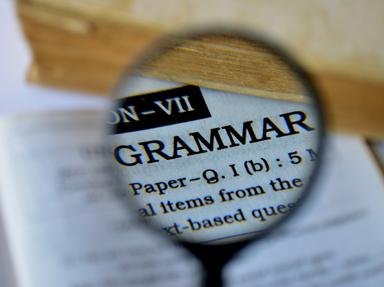Quiz Answer Key and Fun Facts
1. Which of the following options shows the correct position of the apostrophe in the contraction for "you all"?
2. How should this sentence be corrected?
After hitting the brake pedal, the light turned from red to green.
3. Which statement shows a correct application of the rule about either/neither and or/nor?
4. Is there something wrong with the sentence?
There go Samuel and his friends to the store.
5. Which statement uses correct punctuation?
6. Which statement uses "less" or "fewer" incorrectly?
7. Is the verb in the statement correct?
The piano player, and principal, wants to go to jail.
8. Does "has" or "have" belong in the blank below?
The number of days I spend on-line _____ increased.
9. Which statement is the correct one, assuming measles refers to the disease?
#1) Measles is no fun to get.
#2) Measles are no fun to get.
10. How should the statement be corrected?
The principal or the teachers are punishing the student.
Source: Author
Buddy1
This quiz was reviewed by FunTrivia editor
looney_tunes before going online.
Any errors found in FunTrivia content are routinely corrected through our feedback system.

